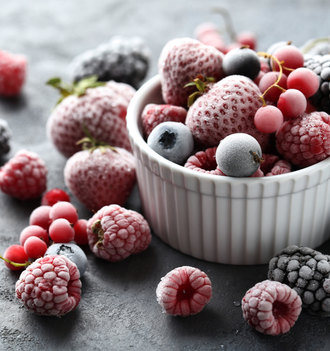Stocking Up on Summer's Bounty
Take advantage of what summer has to offer and stock up on all the fresh produce you can find at great prices from your local farmer’s markets and grocery stores. By freezing and canning fruit and vegetables when they are at their peak ripeness in the summer you can enjoy them all year round. Freezing produce is very time efficient and the extreme cold stops the growth of microorganisms and slows spoilage. Be sure to use suitable storage containers for freezing as old yogurt or sour cream containers are not meant to be frozen and do not preserve quality as well as plastic or glass freezer containers, freezer bags and jars. In a deep freeze you can keep your frozen produce for 6-12 months and in the freezer above your fridge for 1-3 months. Frozen berries are fantastic in smoothies, fruit crumbles, cakes, muffins, pancakes, jams and pie fillings. Frozen vegetables can be great in stews, pasta sauces, pizza toppings, soups, smoothies and casseroles.
Preparing your Produce
All produce should be properly washed and sorted, discarding over or under-ripe produce. Remove any stems, pits or peels as needed. Don’t peel the whole bunch at once or they will brown before you get a chance to bag them. Do it in batches and freeze as you go.
Best Fruit to Freeze
Blackberries, blueberries, raspberries, strawberries, cherries, peaches, apples, grapes, apricots and pears. Apples, apricots, peaches and pears need to be pealed first before freezing. If you toss the apples and pears with lemon juice first it will prevent them from browning. You can also get ascorbic acid in powder form to prevent browning. Toss apricots with honey and toss peaches with honey and lemon to prevent browning. There are several types of fruit packs you can do such as syrup pack, sugar pack and dry pack or unsweetened pack. I prefer the unsweetened pack for most fruit but occasionally I add sugar to sliced strawberries and use them as a dessert or pancake topping.
Best Vegetables to Freeze
Green beans, peas, broccoli, cauliflower, spinach, peppers, carrots, kale, tomatoes and corn. Most vegetables require blanching first before freezing except bell peppers and tomatoes which can be frozen once they have been washed and cut as desired. You need to take out the stem and seeds of the peppers before freezing them. Tomatoes are best if you dip them in boiling water for 30 seconds to remove the skin and then core and dice them. Other vegetables that freeze well but require blanching include green beans, peas, corn, beets, broccoli, cauliflower, spinach and carrots. Blanching involves immersing the vegetables into boiling water for just a minute or two depending on the vegetable. Blanching inactivates their enzymes to prevent colour and quality loss. Don’t over-blanch as this can cause a loss of flavour, colour and vitamins. After blanching, submerge the vegetables in ice cold water for as long as they were in boiling water.
When packing fruit or vegetables into containers leave some room at the top (about an inch or two) to allow for expansion with freezing. Be sure you label all your packages with the date and type of fruit or vegetable, so it is easy to find. Food should be at room temperature or cooler before putting it in your freezer as the faster it freezes the better the quality. Try to use up last years produce before you start eating this year’s.
Spend a little time now to preserve in-season produce and save a lot of money later when prices go up because you have all the produce you need right in your freezer.















